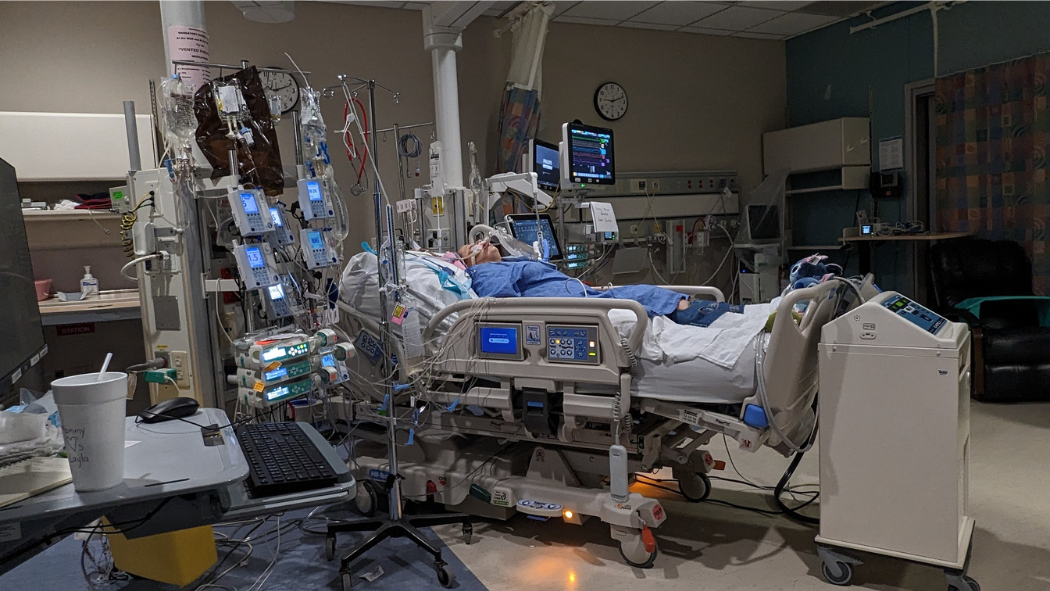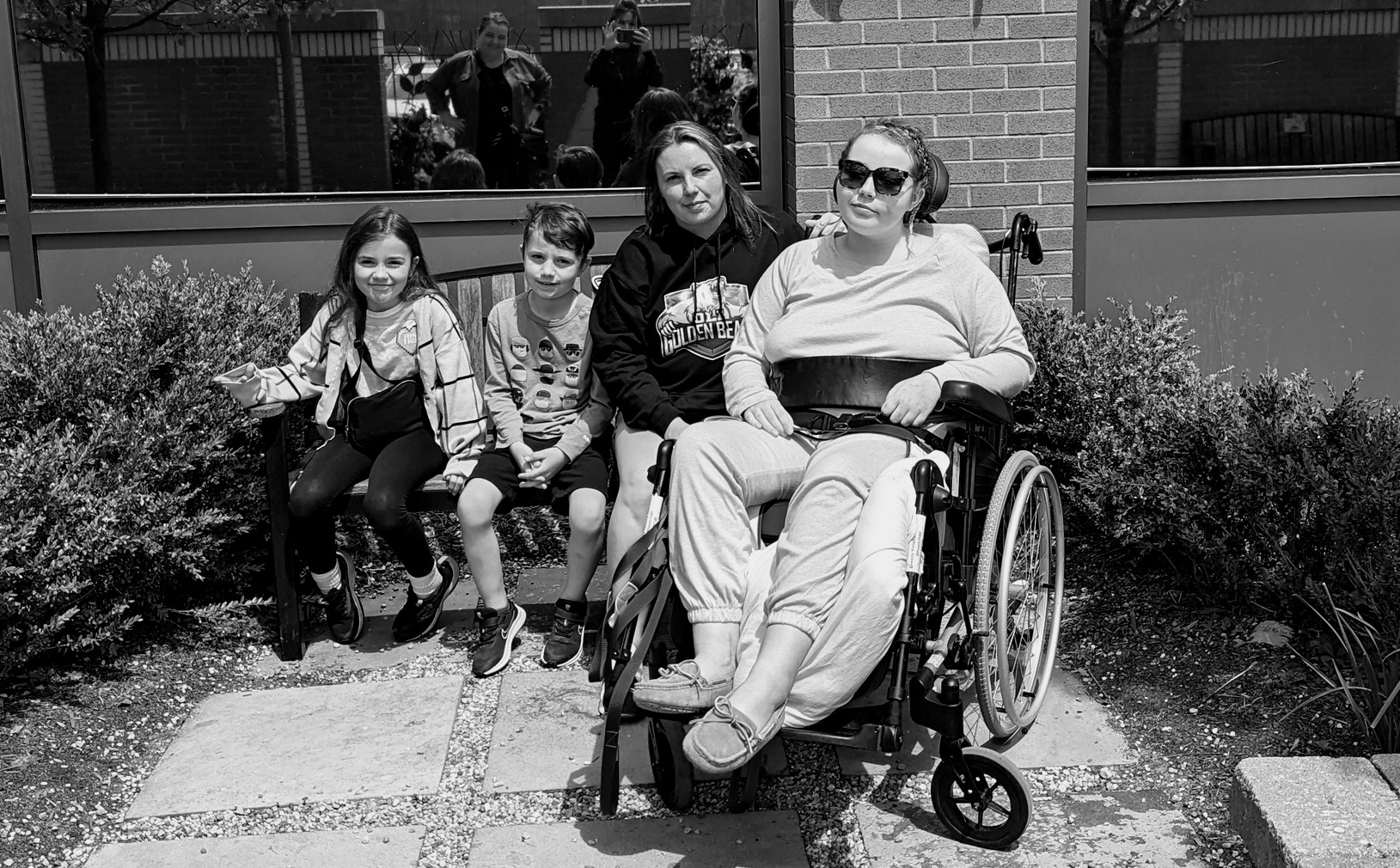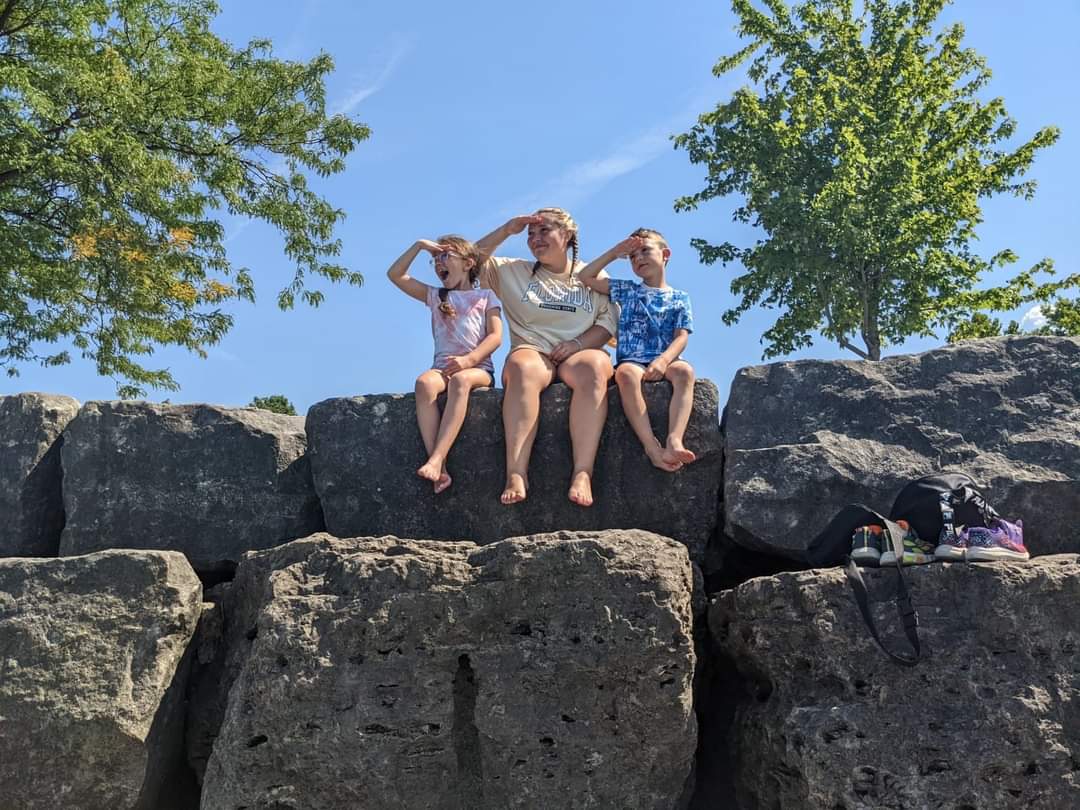
July 5, 2024
Trigger warning: This story involves discussions of motor vehicle collisions, critical injury and death.
On February 25, 2023, Jessica Mitchell was met outside of her home by two OPP officers who were waiting to deliver the worst news a wife and mother could hear.
“They said, ‘your family was involved in a car accident. Your husband has passed away, your son is on the way to Strathroy, and your daughter is being airlifted to London,’” she recalls.
Two of Jessica’s children, seven-year-old Oliver and 16-year-old Layla, were seriously injured in the crash and taken to Children’s Hospital at London Health Sciences Centre (LHSC).
Fortunately, they were wearing their seatbelts. And although their injuries were severe, things could have been much worse.
Oliver was immediately brought into surgery to undergo a bowel resection and repair his broken leg. Layla’s injuries were far more critical, and her health-care team was making decisions to save her life, second by second.

Layla spent 19 days in the Paediatric Critical Care Unit (PCCU) and another 69 days in the Paediatric Inpatient Unit (B6), for a total of 88 days in Children’s Hospital.
She experienced hundreds of internal and external lacerations, a large stroke and several small strokes, as well as broken bones and had multiple surgeries and procedures. In May, she was transferred to Holland Bloorview Kids Rehabilitation Hospital where she would spend another two months recovering.
“When Layla went to Holland Bloorview, she was able to transfer herself to her wheelchair with some help, but she wasn't able to walk,” says Ashley Stephen, Injury Prevention Specialist and one of the many nurses who supported Layla’s recovery.
After her stay at Holland Bloorview, Layla walked through the doors at Children’s Hospital — not as a patient — but as a visitor ready to share thanks with the countless staff who saved her life.
“It was absolutely remarkable to see her visiting the floor, not only without a wheelchair, but walking independently,” Stephen recalls.
Stephen knows that without a seatbelt protecting Layla, things would have turned out differently. “I'm sure there will be people who may say this won't happen to them, but I'm sure Jessica never thought she would have OPP at her door to deliver the worst news possible. That seatbelt ensured the trauma team had the chance to get Layla home to her mom and siblings.”

Seatbelt Safety
Between January and June 2024, 90 per cent of grades 9-12 students polled in the London area reported being in a car with someone who wasn’t wearing a seatbelt. 75 per cent of those students reported not wearing a seatbelt themselves.
When asked why they didn’t belt up, common answers included “forgetting” or “they weren’t going far.”
At LHSC, motor vehicle collisions (MVC) are the number one cause of injury for both adults and paediatric patients.
Unfortunately, the number of MVC traumas continues to rise.
In 2022, 238 MVCs identified as traumas arrived at the Adult Emergency Department. In 2023, that number jumped to 358.
In 2022, 70 MVCS identified as traumas arrived at the Children’s Hospital Emergency Department. That number skyrocketed to 95 in 2023.
“This is a really big deal,” says Dr. Neil Merritt, Director, Paediatric Trauma Program.
“A seatbelt is a simple intervention. It really does minimize the risk of mortality after a motor vehicle collision and can minimize the number of injuries a child experiences.”
Summer is a particularly busy time for MVCs and in turn, Emergency Departments are seeing an increase in injuries not only in teenagers, but in children of all ages who are not properly fastened in their seat.
Aside from ensuring that occupants are safely secured in the vehicle, Dr. Merritt is reminding the community that all objects in the vehicle should be secured as well.
“Securing things properly is also extremely important. We’ve had different objects turn into projectiles: hockey bags, baseball bats, even unsecured wheelchairs. These objects can be lethal in a MVC because they will move and strike the occupants of the vehicle.”
To minimize the occurrence of injuries related to MVCs, the Trauma Program at LHSC hosts the Impact Program and presents at various high schools in London and the surrounding area.
Through the Impact Program, Injury Prevention Specialists have the opportunity to speak directly to teenagers and highlight the importance of wearing a seatbelt. “We teach them how to face those hard conversations when they first get their licenses and passengers don’t want to buckle up, to the importance of not getting in the vehicle with someone under the influence,” says Stephen.
“We talk about the stupid line, and what could happen if the student chooses to cross it, and how to strategize and manage peer pressure.”

Looking Forward
Today, Layla is home and on the road to recovery. She undergoes rehabilitation therapy four to five times a week, including electric stimulation therapy to help regain the movement in her arm and hand.
The health-care providers who supported Layla during her recovery are proud to see the progress she’s made. “Despite the severity of her injuries, the outcome could have been far worse. Layla has since made a remarkable recovery and is gradually reintegrating into all her pre-crash activities,” says Kristine Hooghiem, Nurse Practitioner, Paediatric Brain Injury and Neuro Rehabilitation.
Now as a 17-year-old, Layla looks forward to going back to her norm and having fewer physical boundaries, though she’s already made significant progress. “I feel a lot better with my recovery because I can see all my recovery progress, from starting when I was in a wheelchair to now kicking my mom and my cousin’s butts in Just Dance,” she jokes.
At the end of the day, Layla has a message to anyone who questions the importance of a seatbelt. “Wear your seatbelt,” she says confidently. “They’re there for a reason and not just decoration. Without a seatbelt, I wouldn’t be here today.”
